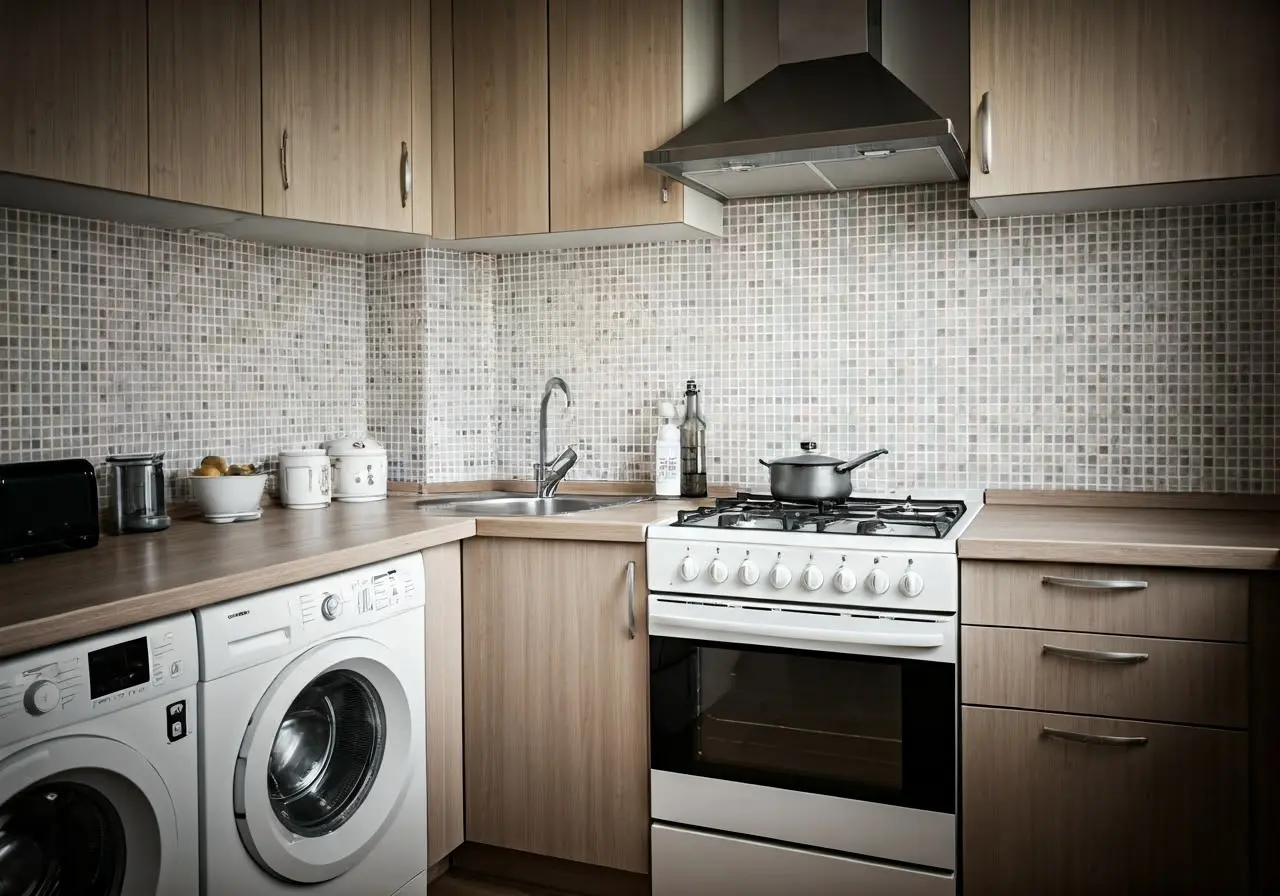Keeping a clean home in the Twin Cities is not just about aesthetics; it’s about creating a healthy, welcoming space for you and your family. Whether you’re prepping for a family gathering or just want to freshen up your living space, these cleaning tips are designed to help you achieve a sparkling home with minimal effort.
1. Start with a Decluttering Session
Before diving into deep cleaning, begin with a decluttering session for each room. Start by identifying items you no longer use or need, and create a sorting system with three categories: keep, donate, and discard. This method not only organizes your space but also makes the cleaning process much smoother and more effective. Decluttering, in essence, sets a solid foundation for a thorough clean.
Decluttering can sometimes feel overwhelming, especially if you have accumulated a lot of stuff over the years. A good strategy to tackle this is the 15-minute rule: spend just 15 minutes a day sorting through one section of a room. Over time, these small efforts will lead to a significantly neater and more organized home. Plus, it becomes much easier to clean surfaces that are free from unnecessary items.
If you’re struggling with letting go of certain items, consider the last time you used it. Items that haven’t been touched in over a year are likely good candidates for donation or discarding. This not only helps clear your space but also gives a second life to your belongings through donations to local charities.
2. Use Natural Cleaning Products
Natural cleaning products are a great option to keep your home free of harsh chemicals and still achieve a thorough clean. Household staples like vinegar, baking soda, and lemon can tackle a variety of tasks. Vinegar is excellent for breaking down grime and disinfecting surfaces, while baking soda works wonders on tough stains and odors. Lemon, with its natural antibacterial properties, can add a fresh scent and cut through grease.
For those looking to reduce their environmental impact and maintain a healthy living space, consider making your own cleaners. A simple solution of equal parts vinegar and water can be used as an all-purpose cleaner. For an extra kick, add a few drops of essential oils like tea tree or lavender, which have additional antibacterial properties and pleasant scents.
There are also various commercial natural cleaning products available for those who prefer convenience. Brands that prioritize eco-friendly ingredients and sustainable packaging can be just as effective as their chemical-laden counterparts without compromising your health or the environment.
3. Focus on High-Touch Areas
High-touch areas like doorknobs, light switches, and countertops are hotspots for germs and should be cleaned regularly. These surfaces can harbor bacteria and viruses that can easily be transferred between family members. Use a disinfectant spray or wipes specifically designed to kill germs effectively. Aim to disinfect these areas at least once a day, especially during flu season.
Beyond the obvious high-touch areas, don’t forget about items like remote controls, computer keyboards, and mobile phones. These gadgets are frequently handled and can accumulate grime swiftly. A quick swipe with a disinfectant wipe can make a huge difference in maintaining a germ-free environment. Remember to turn off electronic devices before cleaning them to ensure safety.
4. The Power of Microfiber Cloths
Microfiber cloths are a game-changer when it comes to cleaning. These cloths are designed to attract and hold dust and dirt without the need for chemical cleaners. Microfiber cloths are ideal for cleaning mirrors, windows, and electronic screens, leaving a streak-free shine. They can also be used on any surface to pick up dust and prevent it from simply being pushed around.
The beauty of microfiber cloths lies in their versatility and eco-friendliness. They are reusable and can withstand hundreds of washes, making them a cost-effective and sustainable choice. For best results, wash your microfiber cloths separately in warm water and avoid using fabric softeners, which can diminish their effectiveness.
5. Don’t Forget the Floors
Floors often bear the brunt of daily activities and can quickly accumulate dirt and grime. Regular vacuuming, especially in high-traffic areas, is essential to keep them looking clean and fresh. For a deeper clean, consider using a steam mop. These devices use the power of steam to sanitize floors without needing harsh chemicals, making them a great choice for hardwood and tile surfaces.
Area rugs and carpets can be hotspots for dust and allergens. Incorporate regular vacuuming as well as occasional deep cleaning using a carpet cleaner. This helps lift out embedded dirt and keep your rugs and carpets looking and smelling fresh. Steam cleaning carpets can also kill dust mites and other allergens, contributing to a healthier home environment.
Don’t overlook the floor underneath furniture. Moving your furniture periodically allows you to clean areas that are often neglected. This simple act can prevent dust build-up and maintain a consistent level of cleanliness throughout your home. Plus, rearranging your furniture can give your space a fresh look without any additional expense.
6. Tidy Up the Bedrooms
A clean bedroom promotes restful sleep and overall well-being. Begin by making your bed every morning. This small task can set a positive tone for the rest of the day. Regularly dust your furniture, including bedside tables and dressers. Dust can accumulate quickly and can affect the air quality in your bedroom, potentially disrupting your sleep.
Washing your bedding at least once a week is crucial. Dust mites, sweat, and skin cells can build up in your sheets, impacting both cleanliness and health. Use hot water and a quality detergent to ensure thorough cleaning. Don’t forget to wash your pillows and mattress covers periodically to keep them fresh and free of allergens.
7. Bathroom Deep Clean
The bathroom is one of the most challenging places to keep clean due to its high moisture levels. Start by applying a mold and mildew cleaner to key areas like the shower, tub, and tiles. Regular cleaning can prevent mold build-up and keep your bathroom looking pristine. Utilize a quality disinfectant spray on the sink and toilet to eradicate bacteria effectively.
Grout lines and caulking can also collect mold and mildew. Use a grout brush and a suitable cleaner or a paste of baking soda and water to scrub these areas. Rinse thoroughly and dry to prevent future mold growth. Regularly change out your shower curtain or liner and launder them to maintain a fresh and clean bathroom environment.
Pay attention to often-overlooked areas like the bathroom vent, which can accumulate dust and affect air quality. Removing and cleaning the vent cover periodically can make a noticeable difference. Also, consider replacing your bathroom exhaust fan filter if it gets clogged or dirty, enhancing its efficiency and keeping your bathroom well-ventilated.
8. Kitchen Clean-Up Tips
The kitchen, as the heart of the home, deserves special attention. Start by cleaning your appliances. Regularly wipe down the exterior of your fridge, oven, and microwave. For a deeper clean, focus on the interior as well. A mixture of baking soda and water can work wonders in eliminating grime and odors from your fridge and microwave.
Wipe down your countertops and backsplashes daily to keep them free from food particles and stains. A simple solution of warm water and dish soap is often enough. For tougher stains, a paste of baking soda and water can help. Don’t forget to clean under your small appliances, like the toaster and coffee maker, where crumbs and spills can accumulate.
Take out the trash regularly to prevent unpleasant odors from building up. Clean your trash can once a week with a disinfectant to keep it smelling fresh. Additionally, maintaining a clean sink by regularly scrubbing it with a disinfectant cleaner and ensuring the drain is free from debris can keep your kitchen in top shape.
9. Maintain Clean Air
Indoor air quality is often overlooked but is crucial for a healthy home. Consider investing in an air purifier to reduce dust, allergens, and other pollutants. Additionally, regularly change your HVAC filters to ensure your heating and cooling systems are circulating clean air. Mark your calendar to replace filters every three months or as recommended by the manufacturer.
Houseplants not only add a touch of nature to your home but also improve air quality. Plants like spider plants, peace lilies, and English ivy are excellent at filtering out common household pollutants. Incorporating these in your home can enhance air quality while adding a green touch to your decor.
10. Regularly Scheduled Cleaning
Consistency is key when it comes to maintaining a sparkling home in the Twin Cities. Set a regular cleaning schedule that fits your lifestyle. Whether it’s a daily, weekly, or monthly regimen, having a plan helps keep tasks manageable. For instance, dedicate certain days for specific chores, like vacuuming on Mondays and dusting on Wednesdays.
Using a cleaning checklist can help you stay organized and ensure no task is overlooked. Customize your schedule to focus more frequently on high-traffic and high-touch areas, and adjust as needed based on your household’s activity level. Regular, consistent cleaning not only keeps your home looking its best but also extends the life of your furnishings and surfaces.



